In our Lenovo ThinkCentre M920x Tiny Project TinyMiniMicro Guide we see what this system offers in the ~1L system category. We are going to keep this article relatively brief since we already covered the Lenovo ThinkCentre M920 and M920q Tiny Guide and Review. We still wanted to check out the “x” version since this is a bit different. Ours came with a PCIe riser and an AMD GPU making it a bit unique in our Project TMM population.
Project TinyMiniMicro Lenovo ThinkCentre M920x Tiny Video
As part of this project, we are releasing videos with some additional looks at the systems and some more candid thoughts. Here is the video for this:
This article will have a bit more since there are some facts and concepts easier to convey using text rather than video. You can also see the full video series using this YouTube playlist. Our suggestion is to open the video and play it in the background to listen. As a bonus, we have a section of the video discussing the M920x Tiny versus the Apple Mac Mini M1 2020 edition.
Project TinyMiniMicro Background
In Project TinyMiniMicro we are purchasing a large number of these devices from different sources. While a standard STH review is of a new product, these TMM nodes occasionally have specs that differ from what one would expect. In all of these pieces, we are going to talk about what makes the nodes unique. We are now well over 20 different nodes to increase diversity. We are testing these on a more circular economy/ extended lifecycle basis to see how they can be deployed after their initial use as corporate desktops.
For our $535, we received a node with an Intel Core i5-8500T CPU, a 8GB SODIMM for RAM, and a 128GB NVMe SSD. We even got an embedded Windows 10 Pro license which would have cost us around $140 alone.
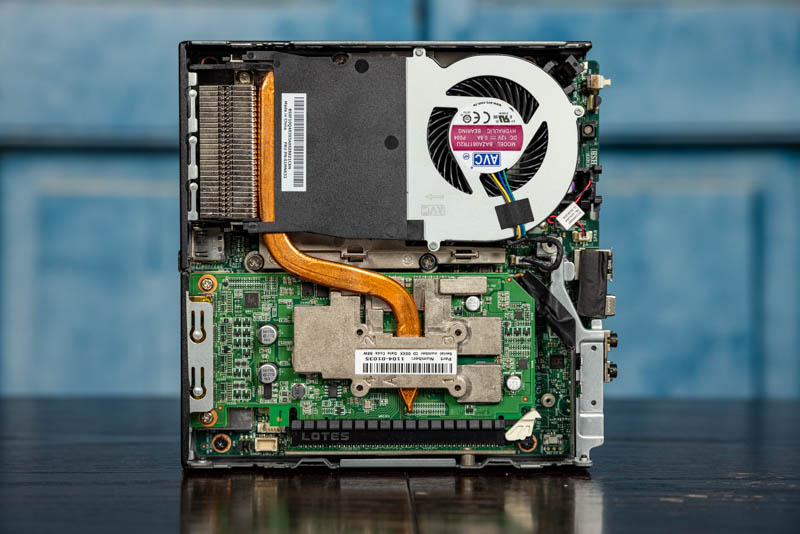
We would likely add a bigger M.2 NVMe SSD, a 2.5GbE or 5GbE USB NIC, 2x 16GB SODIMMs, and 802.11ax WiFi to round out the configuration.
We purchased the M920q for about $60 less. That M920q had twice the RAM, twice the NVMe SSD space, and a newer Core i5-9600T. It also had space to mount an additional drive. Still, the M920x for $60 more offered a PCIe-based AMD Radeon GPU which is a big differentiator in the 1L PC market.
We are going to go into the hardware overview, then into the key specs. We are then going to talk a bit about performance and power consumption before getting to our lessons learned from these units and our final words. Our Apple Mac Mini M1 discussion will happen on the last page in our key lessons learned section.
Lenovo ThinkCentre M920x Tiny Hardware Overview
The chassis itself is a fairly standard design for the older ThinkCentre Tiny series. It measures 179 x 183 x 34.5mm (7.0 x 7.2 x 1.4in) which means it is around 1L like the other systems in this series.
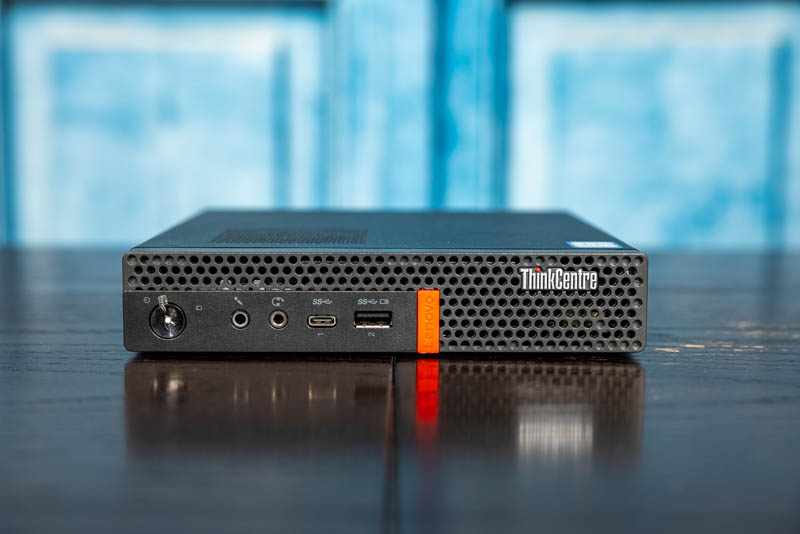
In the front of the chassis, we get headset and microphone jacks as well as two USB 3.1 Gen1 ports. One of these USB ports is a Type-A port while the other is a Type-C port. We generally prefer systems that have at least one Type-C port given how prevalent that is today. We have also seen some systems offer three USB front panel ports on other ~1L workstations, but here we have the more common design with two.
On the rear of the unit, a DisplayPort and a HDMI port standard. In our unit, the dual optional slot that we found on the M920q was instead replaced by four Mini DisplayPort outputs driven by the AMD GPU. Lenovo also has options to replace this panel with an Intel i350-T4 adapter. We specifically purchased this unit to see the PCIe riser.
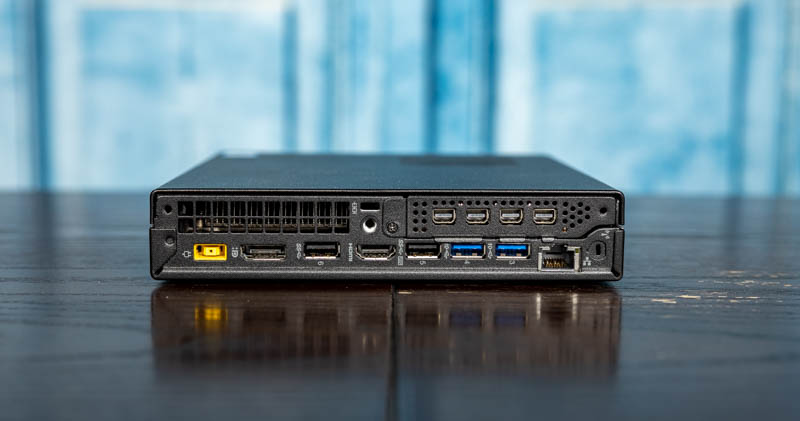
We also have four USB 3 Type-A ports. Some systems of this era used USB 2 ports, so this is a nice upgrade. Two of the ports are USB 3.1 Gen1 ports while the other two are Gen2 ports, just like the M920q. That means one can use fast 10Gbps devices such as the Crucial 1TB X8 USB SSD and get faster-than-SATA storage speeds. For networking, we can see the 1GbE port. Since this model supports vPro, this is going to be an Intel i219 NIC. In our unit, the WiFi antenna header is not populated since ours did not come configured with WiFi.
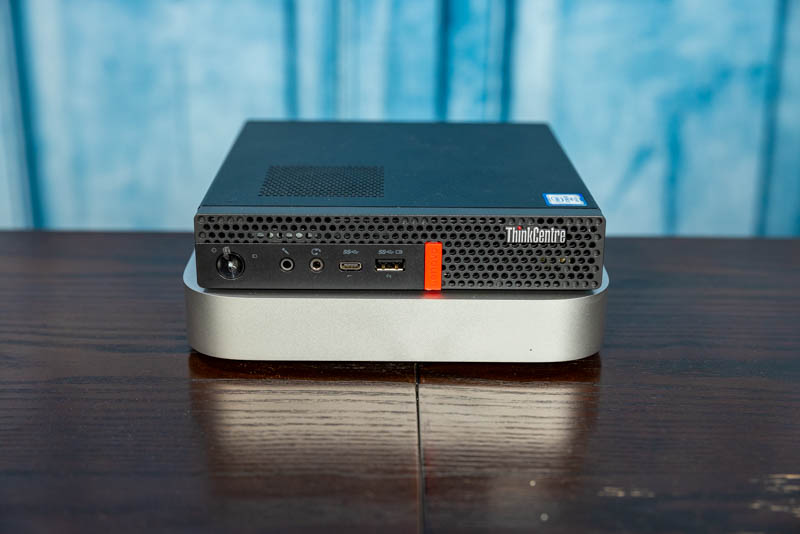
Something that we did want to quickly note is that due to the CPU and GPU combination, the system has a top vent to improve airflow. As a result of this small change, one needs to be more careful of airflow compared to other Project TMM nodes with standard front to back airflow when stacking them.
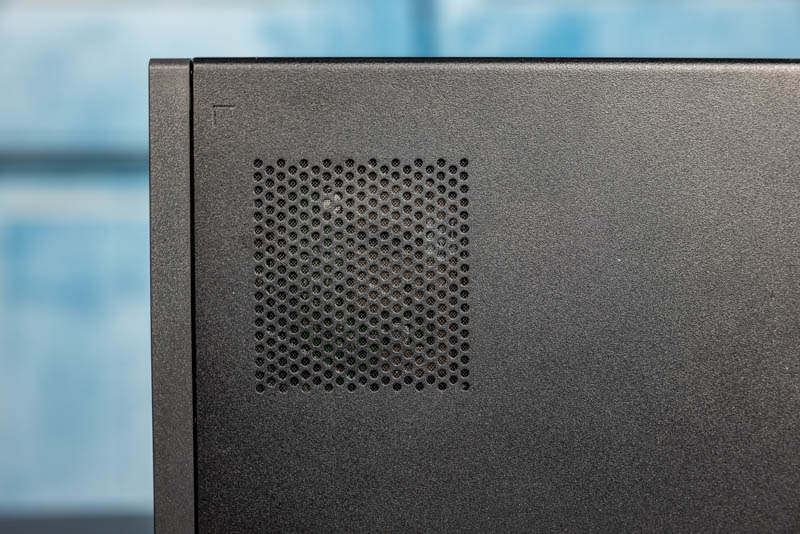
Opening the system is done via a single screw. Lenovo’s design, unlike HP’s for example, does not retain the screw on the chassis. As a result, one has to keep track of it when working in the unit. The fit and finish for the M920x Tiny are very good, but there are some differences between this unit and the M920q that are immediately noticeable.

Inside the system, we see the CPU on top, this time with a twist. There is a heat pipe that connects this cooling design to the AMD GPU below. In our unit, the AMD Radeon RX 560 GPU is taking the place where we would normally see a 2.5″ SATA drive as we did in the M920q Tiny review.
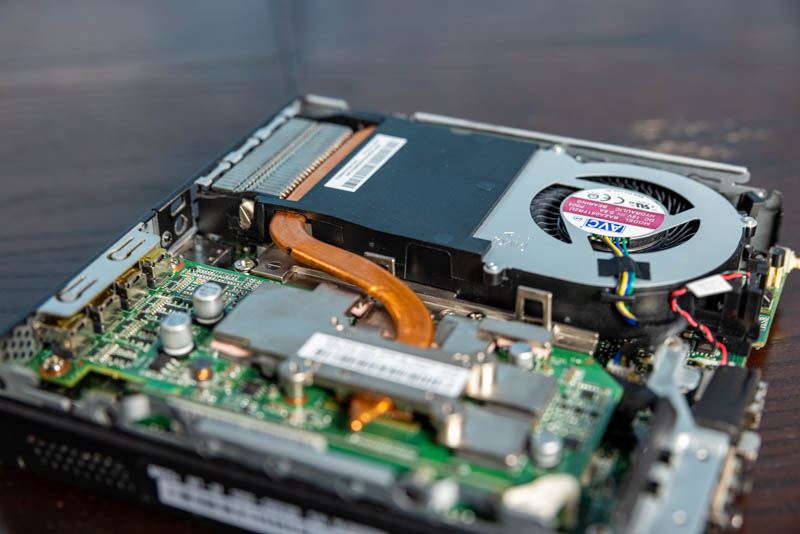
While our unit has the AMD Radeon RX 560 4GB GDDR5 in the system, that is an option. The GPU is connected via a PCIe Gen3 x8 riser. This slot can also be configured and ordered with an Intel i350-T4 NIC, or there can be nothing here. For those who are looking for a low profile expansion slot TMM node, check if you are getting the riser with your unit as they can be hard to find elsewhere.
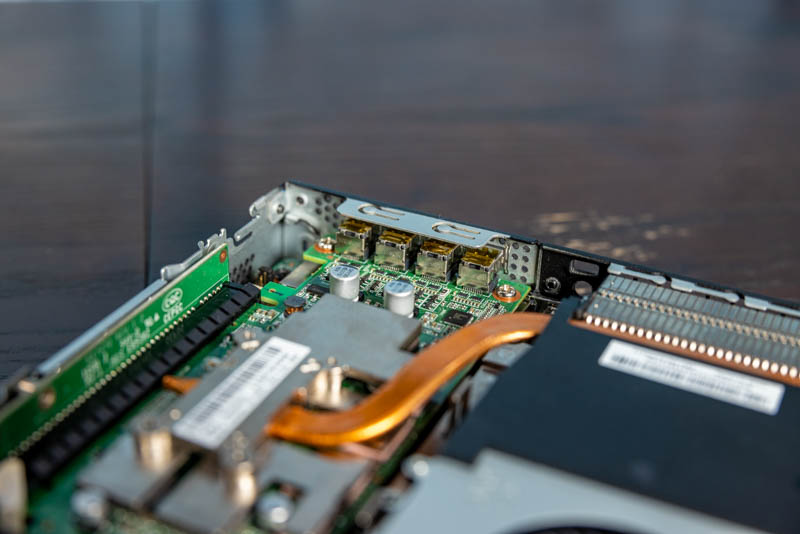
Underneath the GPU we have the WiFi card slot. Our does not have WiFi installed, but if they were configured, these came with 802.11ac WiFi + Bluetooth combo cards from Intel or Realtek. We have been upgrading a lot of our units to WiFi 6 using the Intel AX200. It is much easier to upgrade if there are already antenna wires present.
Lenovo’s design we really like. Once the top cover is off, one can remove the bottom cover by simply sliding the cover off. Underneath, we find the memory and NVMe storage expansion.
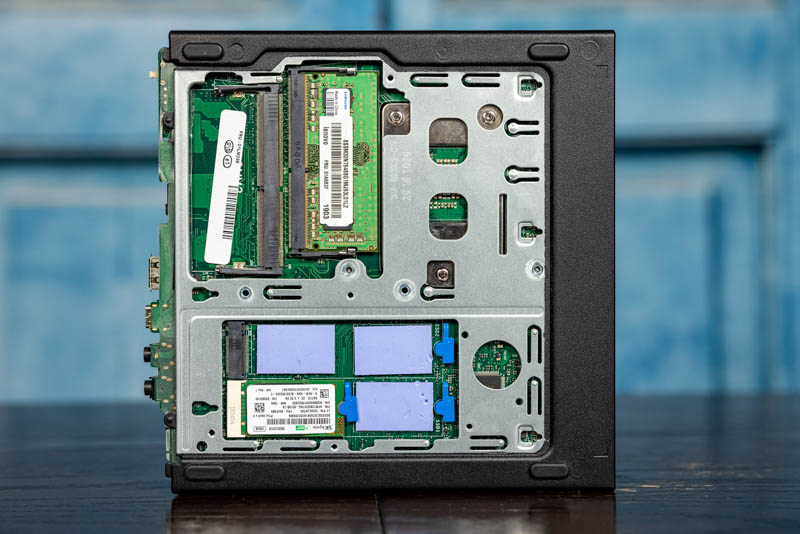
Our unit came with a single 8GB DDR4-2666 SODIMM. We generally prefer getting 16GB units, but this is what came in the system. With a 6 core processor, many of our readers will want more than 16GB of memory. Something that is also possible is upgrading by adding a 16GB stick and getting 8GB + 16GB for 24GB which is a nice fit if one does not want to move to a 32GB level. We also tried the same 32GB SODIMMs we used in our Dell OptiPlex 7070 Micro Project TinyMiniMicro Guide and Review and found that they worked in our Lenovo M920x Tiny for 64GB total as well.
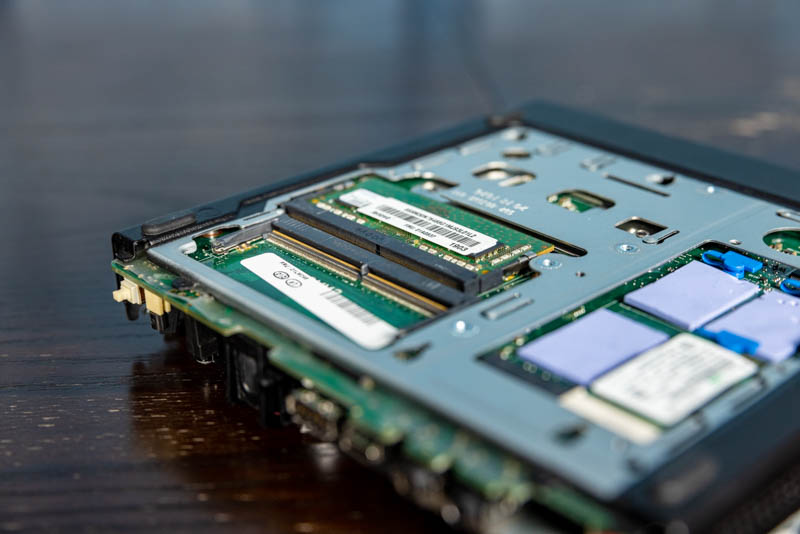
For NVMe storage, there are dual M.2 drive slots. Also, the M.2 retention mechanism is a blue tool-less design in the M920x Tiny. After servicing a few dozen of these nodes, having everything tool-less is a major design win for us. Our unit came with a SK hynix 128GB NVMe SSD which is an underwhelming PCIe Gen3 x2 DRAM-less unit. While it is good for a boot drive, it is neither large nor fast so it is something we would upgrade. Then again, as a Proxmox VE boot/ root device, it is great.
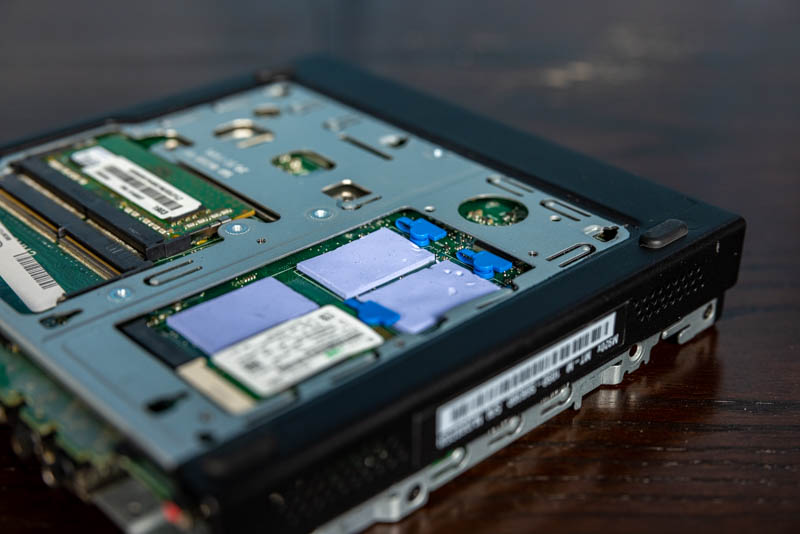
This is one of Lenovo’s highest Tiny systems, and it shows. There are a ton of configuration options and it is quite easy to service the unit without tools. If you have one unit that you need to service, the tool-less design may not be a big deal. When you have many units, it can be particularly important. Lenovo is leading the market in the 1L node serviceability.
Next, we are going to look at the key specs we have been able to pull from a number of different sources to get you some idea of what to expect in terms of configuration diversity. We are then going to get to performance and power consumption.

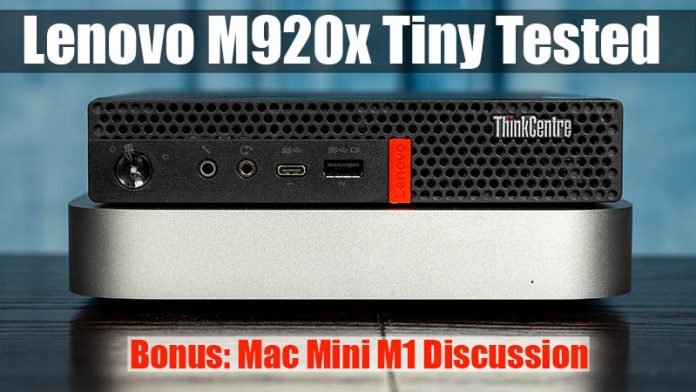
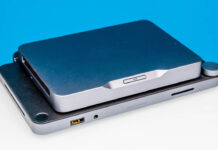
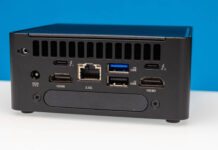

@Patrick – SHOWOFF!!!!!!!!
How the h… did you get hold of a geforce 3090gtx? :-) – hope we’ll see a review soon? Can see it’s a founders edition in the video, so i presume it was sent directly to you from Nvidia. :-)
@Patrick Can this bad boy run run 10Gbe NIC instead of the RX 560? It’s the only thing that has kept me from pulling the trigger on this box, as it would be perfect for a small at-home 4 node vSAN deployment lab, especially with 8 Cores per unit.
@Saul – it should. However those graphicscards are quite specific to that model. https://psref.lenovo.com/Product/ThinkCentre/ThinkCentre_M920x_Tiny – look at “specifications” and you will see original support for a 4x Gigabit card, so if you find a 1x 10gig low profile card (since the card is running x4 slots and not x16/8, that would probably work as well. – no official support though.)
I am running a Mellanox ConnectX-3 (type CX311A) 10Gbps NIC in in m920q with a 01AJ940 riser card. Note: the top cover will not close completly if the braket is left on the NIC. Though it will be covered completly, but you notice that the cover doesn’t snap completely into place.
Hi!
I get one of this and I noticed that rx560 is the one with 896 shaders instead of the good one with 1024 shaders.
I tried https://www.techpowerup.com/forums/threads/unlock-the-shaders-amd-radeon-rx-560d.240735/page-2#post-3797614 to unlock all shaders but it looks hardware locked.
Did you notice that? Did you try to unlock all shaders?
Hey
Love the content, i am having trouble finding information as to whether or not this thing supports pcie bifurcation over pcie, thinking of getting a low profile pcie quad m.2 adaptor. But i believe it must support bifurcation for that to work :-)
Cheers